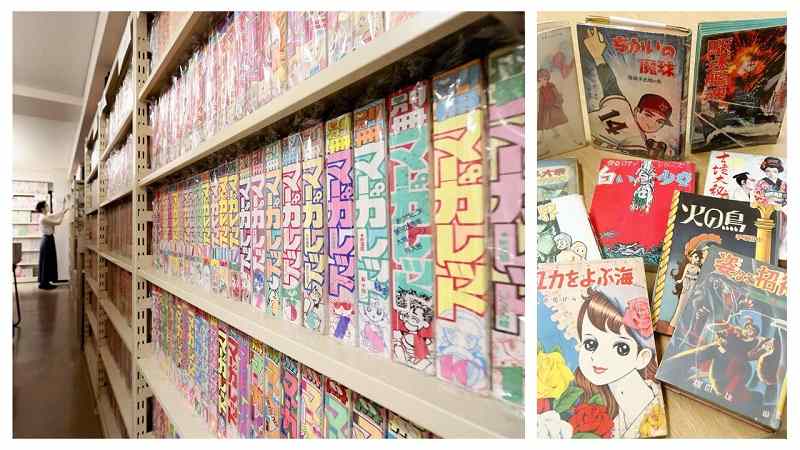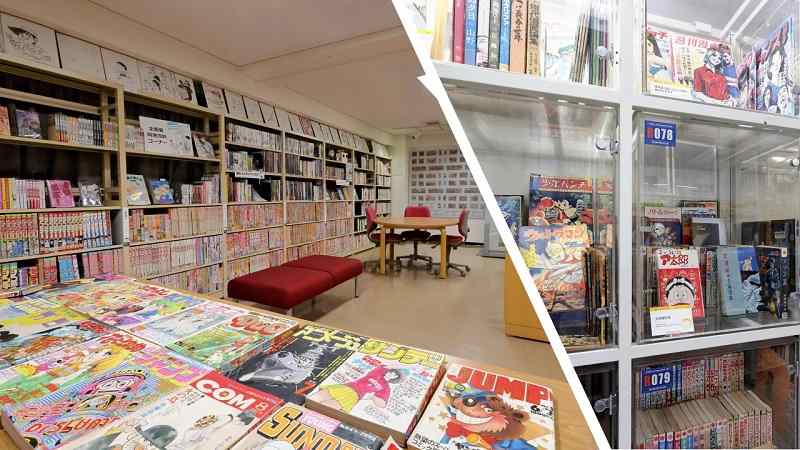Tokyo : Enjoy memorable manga from the Showa era

Left : Manga magazines stored at Yoshihiro Yonezawa Memorial Library of Manga and Subcultures Right : There is a wide selection of legendary artists’ early works and rental books.
10:00 JST, September 7, 2022
Meiji University’s Yoshihiro Yonezawa Memorial Library of Manga and Subcultures is located near Tokyo’s Jimbocho, a town of secondhand books. One of the largest manga libraries in the nation, it houses approximately 410,000 items, including manga magazines and books published after the early Showa era (1926-1989), as well as original manuscripts and animation celluloid pictures.
Meiji University established the School of Global Japanese Studies in 2008, where students can study manga and anime.
Then, in 2009, the university received a collection of kashi-hon rental books published around the 1950s and 1960s from Toshio Naiki (1937-2012), who was a member of the board of directors of the Japan Society for Studies in Cartoons and Comics.
The university also received a separate donation from Yoshihiro Yonezawa (1953-2006), a manga critic, of anime and science fiction-related items as well as fanzines.
Initially, separate libraries were established for each donation, but the university integrated their operations in spring of last year, allowing visitors to access both collections at a single counter.
As you enter the exhibition room, you’ll notice clear acrylic cases filled with magazines and other materials lining the walls. There is an issue of the weekly magazine Shukan Shonen Jump, most likely from the 1970s, with “Barefoot Gen,” “The Gutsy Frog,” “Team Astro” and other manga titles on the cover. Back then, the magazine was priced at ¥130.
In the reading room on the second floor, which holds approximately 4,000 volumes, there are also magazines that are no longer published, such as “Garo.”
Visitors can search the library’s collection and, upon request, read rare publications. They can also hold in their own hands the first issue of the January 1967 COM magazine, in which Osamu Tezuka’s “Hinotori” (Phoenix) was serialized.

Left : The reading room on the second floor is lined with weekly magazine “Shukan Shonen Sunday” issues. Right : The permanent exhibition on the first floor is filled with magazines and other comics.
I held this volume that will remain in the history of memorable manga magazines, with the utmost care.
Other weekly magazines like the Shukan Shonen Magazine of March 1968 was full of famous titles such as “The Genius Bakabon,” “Gegege no Kitaro,” “Rocky Joe” and “Star of the Giants.”
You can also view the weekly magazine Shukan Margaret issues, which carried “The Rose of Versailles” and “Aim for the Ace.”
“The interesting thing about tracing magazine culture is that we can see who was publishing works at the same time, the rivalries and teacher-student relationships among manga artists,” Emi Misaki, a staff member, said.
I felt the excitement of the manga world and the readers of the past, still strong long after these comics were created.

Yoshihiro Yonezawa Memorial Library of Manga and Subcultures
The library is located on the Surugadai Campus of Meiji University, about a seven-minute walk from JR Ochanomizu Station.
Address: 1-7-1 Kanda Sarugaku-cho, Chiyoda-ku, Tokyo
Hours: Mondays and Fridays: 2 p.m.-8 p.m., Saturdays, Sundays and holidays: noon-6 p.m. Closed Tuesdays, Wednesdays and Thursdays.
Admission: The 1st floor exhibition room is free. One-day membership to the 2nd floor reading room for ages 18 or older starts at ¥330, and from ¥110 for those under 18. Free for pre-school children.



